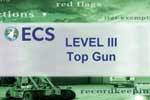Key Findings
The Asia-Pacific additive manufacturing in aerospace & defense market is estimated to register a CAGR of 23.19% during the forecast years of 2023 to 2032. The market growth of the region is facilitated by key factors, such as the adoption of 3D technology by several military forces in order to improve defense capabilities in the areas of resilience, impact, mobility, and security, as well as the surge in aviation business due to the increasing number of travelers.
Market Insights
China, Japan, India, South Korea, Indonesia, Thailand, Vietnam, Australia & New Zealand, and Rest of Asia-Pacific are considered for the Asia-Pacific additive manufacturing in aerospace & defense market growth analysis. In 2021, Lockheed Martin Australia entered into a collaborative partnership with Omni Tanker as well as the University of New South Wales. The collaboration is aimed at the commercialization of Type IV and V tanks through the use of the patented OmniBIND technology for NASA and Lockheed Martin applications.
Likewise, in the same year, Quickstep Holdings Ltd signed a non-binding MoU regarding a proposed aftermarket services agreement with Triumph Aviation Services Asia. The move aims to create a tactical alliance and provide enhanced coverage of MRO services to airlines as well as other domestic MRO customers. As a result, such strategic initiatives and developments in the region are expected to play an important role in fueling the Asia-Pacific additive manufacturing in aerospace & defense market growth during the projection period.
Competitive Insights
Some of the major companies operating in the market include Honeywell Internation Inc, Thales Group, etc.
Our report offerings include:
- Explore key findings of the overall market
- Strategic breakdown of market dynamics (Drivers, Restraints, Opportunities, Challenges)
- Market forecasts for a minimum of 9 years, along with 3 years of historical data for all segments, sub-segments, and regions
- Market Segmentation caters to a thorough assessment of key segments with their market estimations
- Geographical Analysis: Assessments of the mentioned regions and country-level segments with their market share
- Key analytics: Porter’s Five Forces Analysis, Vendor Landscape, Opportunity Matrix, Key Buying Criteria, etc.
- The competitive landscape is the theoretical explanation of the key companies based on factors, market share, etc.
- Company profiling: A detailed company overview, product/services offered, SCOT analysis, and recent strategic developments




